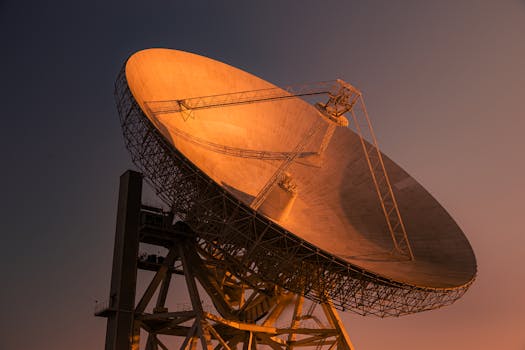GEO Satellites: Understanding the Technology and Applications

GEO Satellites: Understanding the Technology and Applications
GEO satellites, or Geostationary Earth Orbit satellites, are a type of satellite that orbits the Earth at an altitude of approximately 36,000 kilometers, remaining stationary relative to a fixed point on the planet. This unique characteristic allows GEO satellites to provide continuous coverage of a specific region, making them an essential component of modern telecommunications. GEO satellites have been in use for decades, and their technology and applications continue to evolve, playing a vital role in various industries, including telecommunications, navigation, and weather forecasting.
The first GEO satellite, Syncom 2, was launched in 1963, and since then, numerous GEO satellites have been launched, with many more planned for the future. These satellites are used for a wide range of applications, including television broadcasting, telecommunications, navigation, and weather forecasting. One of the primary advantages of GEO satellites is their ability to provide continuous coverage of a specific region, making them ideal for applications that require a high level of availability and reliability.
How GEO Satellites Work
GEO satellites work by transmitting and receiving signals to and from Earth-based stations. The satellite receives a signal from an Earth-based station, amplifies it, and then retransmits it back to Earth, where it is received by another Earth-based station. This process allows GEO satellites to provide a wide range of services, including television broadcasting, telecommunications, and navigation. The signals transmitted by GEO satellites are typically in the C-band, Ku-band, or Ka-band frequency ranges, which are allocated for satellite communications.
The technology used in GEO satellites is constantly evolving, with advancements in areas such as propulsion systems, power generation, and communication equipment. Modern GEO satellites are equipped with advanced propulsion systems, such as ion engines, which provide high efficiency and long mission durations. Additionally, GEO satellites are equipped with advanced power generation systems, such as solar panels, which provide a reliable source of power.
Applications of GEO Satellites
GEO satellites have a wide range of applications, including television broadcasting, telecommunications, navigation, and weather forecasting. Television broadcasting is one of the most common applications of GEO satellites, with many television channels being broadcast via satellite. Telecommunications is another significant application, with GEO satellites providing internet connectivity, telephone services, and other communication services to remote and underserved areas.
Navigation is another critical application of GEO satellites, with systems such as GPS (Global Positioning System) relying on a network of GEO satellites to provide location information and timing signals. Weather forecasting is also an important application, with GEO satellites providing imagery and data on weather patterns, allowing for more accurate forecasting and warning systems.
Future Developments and Challenges
The future of GEO satellites is promising, with many new developments and advancements on the horizon. One of the most significant challenges facing the industry is the increasing demand for satellite capacity, which is driving the development of new technologies and systems. The emergence of new satellite constellations, such as OneWeb and Starlink, is expected to increase the availability of satellite capacity, providing more opportunities for telecommunications and other applications.
However, the increasing number of satellites in orbit also poses significant challenges, including the risk of collisions and the accumulation of space debris. To address these challenges, the industry is developing new technologies and systems, such as satellite-based propulsion systems and debris removal systems. Additionally, there is a growing need for more efficient and sustainable satellite operations, which is driving the development of new propulsion systems and power generation technologies.


